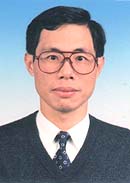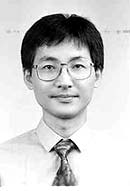Contents: 2024 | 2023 | 2022 | 2021 | 2020 | 2019 | 2018 | 2017 | 2016 | 2015 | 2014 | 2013 | 2012 | 2011 | 2010 | 2009 | 2008 | 2007 | 2006 | 2005 | 2004 | 2003 | 2002 | 2001
2004, 4
Optimization on constrained single-layer absorbers by simulated annealing
language: English
received 27.02.2004, published 07.04.2004
Download article (PDF, 280 kb, ZIP), use browser command "Save Target As..."
To read this document you need Adobe Acrobat © Reader software, which is simple to use and available at no cost. Use version 4.0 or higher. You can download software from Adobe site (http://www.adobe.com/).
ABSTRACT
As the thickness of sound absorber is often confined by the necessity of worker’s maintenance and access in the practical engineering work, the consideration of maximal sound absorption on the sound absorber with limited thickness becomes important and essential. In this paper, by using the simulated annealing (SA), a stochastic relaxation technique based on the analogy of the physical process of annealing metal, a single-layer absorber, including (1) one layer of perforated plate; (2) one layer of acoustic fiber; (3) one layer of air space; and (4) a rigid-backing wall, is optimized under the thickness constraints. A numerical case in dealing with pure tone noise of 350 Hz was exemplified. Before optimization, a sample was tested and compared with the experimental data for accuracy check of mathematical model. Results proved that SA optimization provides a quick and efficient approach on the design of single-layer sound absorbers under fixed thickness.
Keywords: sound absorption, transfer matrix method, shape optimization, simulated annealing
11 pages, 6 figures
Сitation: Ying-Chun Chang, Long-Jyi Yeh, Min-Chie Chiu. Optimization on constrained single-layer absorbers by simulated annealing. Electronic Journal “Technical Acoustics”, http://www.ejta.org, 2004, 4.
REFERENCES
[1] L. J. Yeh, M. C. Chiu, G. J. Lai. Computer aided design on single-layer perforated absorbers under space constraints. Proceedings of the 19-th National Conference on the Chinese Society of Mechanical Engineers. 2002, pp. 635–643.
[2] S. Kirkpatrick, C. D. Jr. Gelatt, M. P. Vecchi. Optimization by simulated annealing. Science, 1983, vol. 220, N°4598, pp. 671–680.
[3] A. Metropolis, W. Rosenbluth, M. N. Rosenbluth, H. Teller, E. Teller. Equation of static calculations by fast computing machines. The Journal of Chemical Physics, 1953, vol. 21, N°6, pp. 1087–1092.
[4] M. C. Chiu. Compact acoustic board for low frequencies: experimental study and theoretical analysis. The 180-th National Conference on C.S.M.E. 2001, C3, pp. 719–724.
[5] M. E. Delany and E. N. Bazley. Acoustical properties of fibrous absorbent materials. Applied Acoustics, 1969, 13, pp. 105–116.
[6] K. U. Ingard and R. H. Bolt. Absorption characteristics of acoustic material with perforated facings. Journal of the Acoustical Society of America, 1951, 23, pp. 533–540.
[7] R. H. Bolt. On the design of perforated facings for acoustic materials. Journal of the Acoustical Society of America, 1947, 19, pp. 917–921.
[8] D. A. Bies and C. H. Hansen. Engineering Noise Control. Unwin Hyman, 1988.
[9] Jinkyo Lee, W. Swenson, Jr. George. Compact sound absorbers for low frequencies. Noise Control Engineering Journal, 1992, 38(3), pp. 109–117.
[10] Rayleigh, Lord. The Theory of Sound, Macmillan. London, 1896.
[11] C. N. Wang and J. H. Torng. Experimental study of the absorption characteristics of some porous fibrous materials. Applied Acoustics, 2001, 62, pp. 447–459.
[12] Alex Cave, Saeid Nahavandi, Abbas Kouzani. Simulation optimization for process scheduling through simulated annealing. Proceedings of the 2002 Winter Simulation Conference, pp. 1909–1913.
 |
Ying-Chun Chang received his MS degree from the Mechanical Engineering Department of Manhattan College, New York, USA, in 1982. Since 1983, he has been with the Department of Mechanical Engineering, Tatung University, Taipei, Taiwan, where he is engaged in teaching and research in the area of noise and vibration control. His current research interests include computer-aided acoustical filter design, experimental modal analysis and smart structures. He is currently an Assistant Professor at Tatung University. e-mail: ycchang(at)ttu.edu.tw Corresponding author. Mailing address: Department of Mechanical Engineering, Tatung University, 40, Chungshan N. Rd., 3-rd Sec., Taipei, Taiwan 104, R.O.C. |
|
 |
Long-Jyi Yeh received his MS and PhD degrees from the Mechanical Engineering Department of Tatung University, Taipei, Taiwan, in 1987 and 1994, respectively. From 1992 to 1995, he jointed Tatung Company as a senior automation engineer, where he developed researches of manufacturing and automation technologies. In 1995, he jointed the faculty of the Department of Mechanical Engineering at Tatung University, Taipei, Taiwan as an Associate Professor. e-mail: ljyeh(at)ttu.edu.tw |
|
 |
Min-Chie Chiu received his MS degree from the Mechanical Engineering Department of Stevens Institute of Technology, New Jersey, USA in 1989. He jointed CTCI, Taipei, Taiwan as an environmental engineer in 1990 where he developed practical design work in noise and vibration control during his employment with the company. He still continues his design work in CTCI and owns seven patents in sound absorber personally. Currently, he is pursuing his PhD degree at Tatung University, Taipei, Taiwan. e-mail: Min-Chie.Chiu(at)ctci.com.tw |
|
